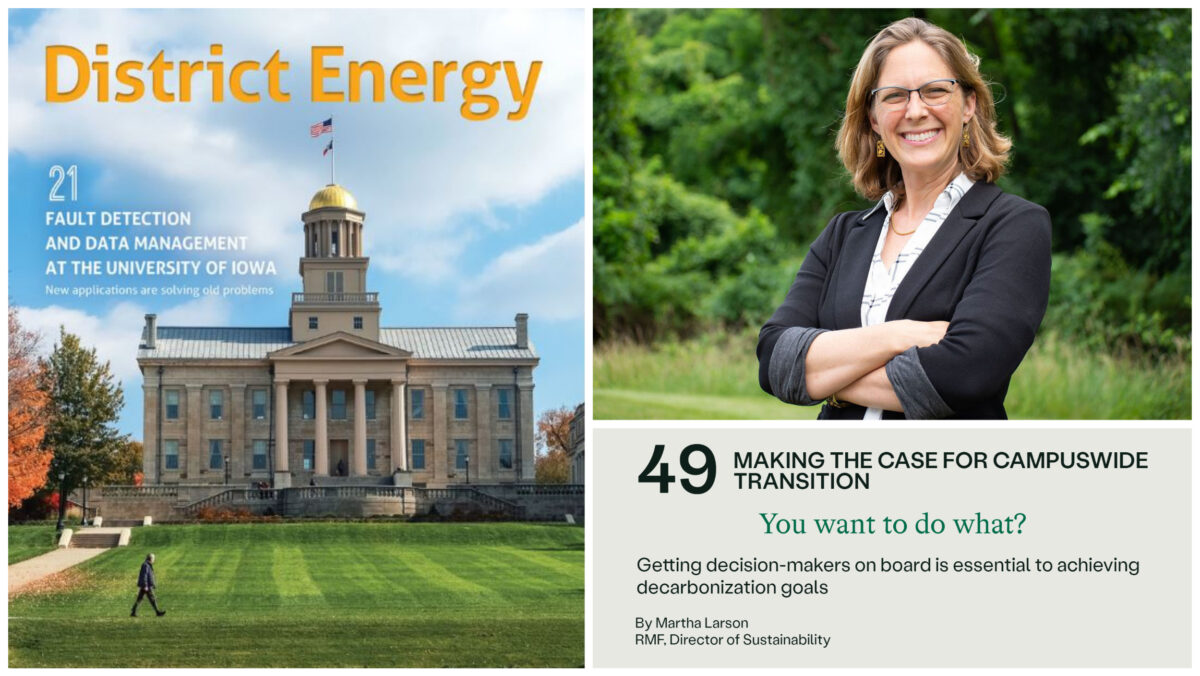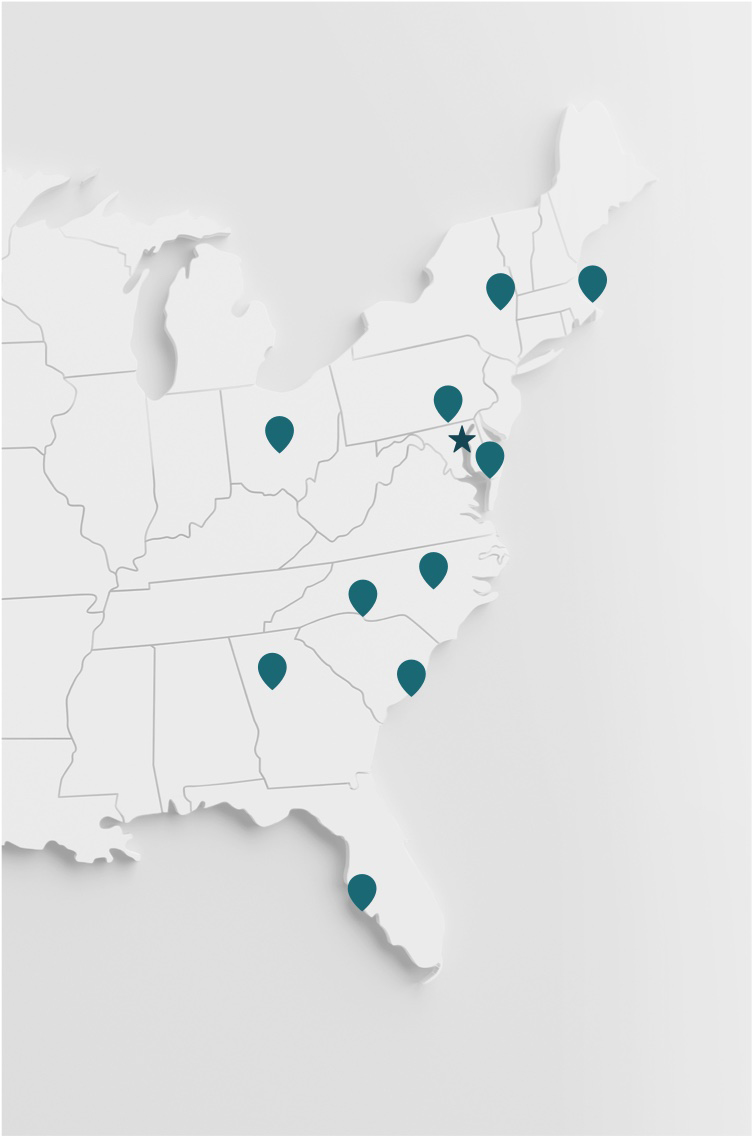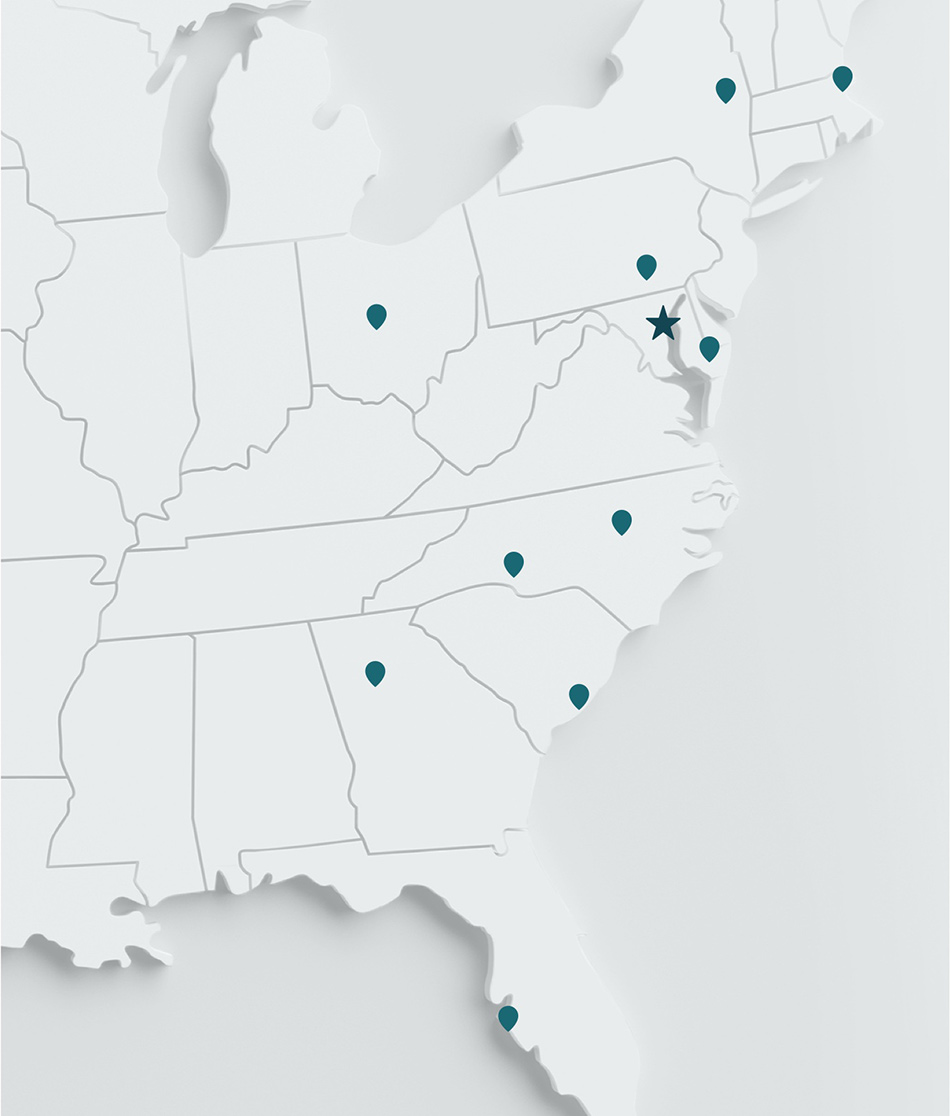
A previous version of the article below appeared in the First Quarter 2023 issue of District Energy Magazine. To learn more about District Energy or read the full publication, please visit the website. Subscriptions are FREE.
By Martha Larson
Over a decade ago, hundreds of higher education campuses published climate action plans defining long-term goals for carbon reduction. Many are now creating full decarbonization proposals to turn those ambitious goals into action.
As carbon-free electricity becomes more readily available, many plans center around replacing on-site combustion equipment with electric heat pumps to significantly increase system efficiency and drive down emissions. This requires transitioning from existing steam infrastructure to low-temperature hot water (LTHW) heating at 120 to 140 degrees Farenheit and converting nearly every campus building to work with LTHW.
It’s a proven path to significant energy and carbon reduction. But in practice, just the thought of such a large-scale change can be overwhelming. It is the task of project champions – sustainability, facilities and finance staff – to make a compelling case for decarbonization.
More than a century ago, decisions to invest in district energy systems produced innumerable benefits over decades of campus growth. But as aging steam systems face major reinvestment requirements, and as steam plant operators become difficult to replace, colleges and universities are at another crossroads, contemplating once-in-a-generation questions on how to enter a new energy era.
This is a decisive moment that positions campus leaders as change makers who will create beneficial legacies. Just as past leaders made key decisions to create district energy systems, current campus leaders must meet today’s challenge as calls to decarbonize become more urgent and as peer institutions move ahead with carbon reduction achievements. A historical framework, recalling the intergenerational benefits of past commitments, can capture the attention of campus directors and engage them in utility decisions that used to happen mostly behind the scenes. A sense of collective responsibility builds teamwork and trust between project advocates and the institutional decision makers whose support is crucial.
Starting with a short list of clear and concise objectives helps frame these conversations within a common set of values that will ground decision making at every step. Fundamental questions will arise. Why are we doing this? To reduce carbon emissions? To address deferred maintenance? To reduce operating costs? To mitigate risks of future energy and carbon price volatility? To maximize future system flexibility?
Every institution must identify its core values and objectives through its own lens.
At high-level meetings, presenters may get only 20 minutes to summarize a year’s worth of work. Project advocates need to have a toolbox of well-crafted talking points and straightforward graphics to explain complex technical and financial analyses quickly and clearly.
Success depends on decision makers’ ability to understand the options they are being asked to consider and to confidently endorse the overall direction. Think about what core concepts must be understood to support sound decision making.
A few bullet points like these – with concise elaboration and supporting visuals – are worth a thousand words:
A decarbonization outline that includes estimated costs, savings and potential funding strategies is just as important as clearly communicating technical information. A life cycle cost comparison is essential to evaluating alternatives compared to business-as-usual conditions. Although capital costs can be significant, they are only part of the equation. A 30-year life cycle cost analysis will show how annual costs (or savings) can be a major decision factor, especially if it includes a future cost of carbon.
Operating costs, in fact, may be much less for a hot water system if an existing steam plant currently requires 24/365 staffing, and a significant and permanent reduction in annual campus energy use reduces exposure to potential future volatility of energy costs.
Assembling an interdisciplinary team can greatly enhance the decarbonization planning process. Budget office staff can inform financial discussions and help the team develop reliable financial models. Campus planners and facilities management personnel can align decarbonization initiatives with other campus construction, renovation and maintenance projects to generate costsharing opportunities and consolidate campus disruption. External affairs and development departments can promote the project and identify potential funding sources.
Campus decarbonization is not a single project. It requires a long-term master plan, methodically implemented over years or decades. The end goal is to transition energy infrastructure on a scale that most of us have not seen in our lifetimes, while addressing an increasingly serious global cns1s.
Decarbonization plans, therefore, don’t fit within a traditional project-approval framework. But they are still executed via a series of discrete projects and decisions that incorporate lessons learned along the way. Not sure how to begin? Here are 10 ways to get started:
1. Compile heating, cooling and electrical meter data and utility bills for the central plant and all campus buildings. This will help formulate energy load profiles, an important initial step in any decarbonization study.
2. Update campus design and construction standards so that all new buildings and major renovations are built to operate on LTHW. Provide localized electric generation sources for humidification, kitchen equipment, cage washers and other process steam equipment.
3. Identify planned capital projects – new construction, major renovations and maintenance – that could incorporate L THW or serve decarbonization goals in other ways.
4. Identify campus assets that should be included in a decarbonization plan. Was there a recent electrical system upgrade or large-scale solar installation? Is there relatively new gas equipment that can be used for backup or to supplement heat pumps in cold winter months?
5. Identify existing liabilities that a decarbonization plan could address. What aging equipment or failing infrastructure can be replaced as part of the initiative?
6. Get to know the condition, capacity and planned upgrades for both the campus and for public utility electric grids. Begin a conversation with your provider utility about their decarbonization goals and read its integrated resource plan to identify opportunities and challenges.
7. Read “explainer” articles about the Inflation Reduction Act to understand how and when federal funds could contribute to your decarbonization projects.
8. Commission a high-level concept study to compare feasibility, annual energy costs, carbon savings and capital costs for decarbonization options. The outcomes of this research will help define direction and advance the most promising options to the next stage of development.
9. Divide the campus into multiple zones to break down overall decarbonization goals into smaller chunks. Seek out pilot projects to test L THW or other decarbonization concepts in one building at a time or in one campus subdistrict.
10. Educate the campus community in order to build a network of project champions. Seek opportunities to collaborate with students and faculty, and harness the power of public relations by turning construction fences into art exhibits, for instance, and highlighting institutional stories of decarbonization success during admissions tours.
Campuswide decarbonization is a major undertaking that requires institutional support informed by deep technical knowledge, responsible research and educated, committed advocates.
Martha Larson is RMF Engineering’s director of sustainability. She is a former longtime manager of energy and sustainability at Carleton College and has a bachelor’s in mechanical engineering.from Northwestern University.

